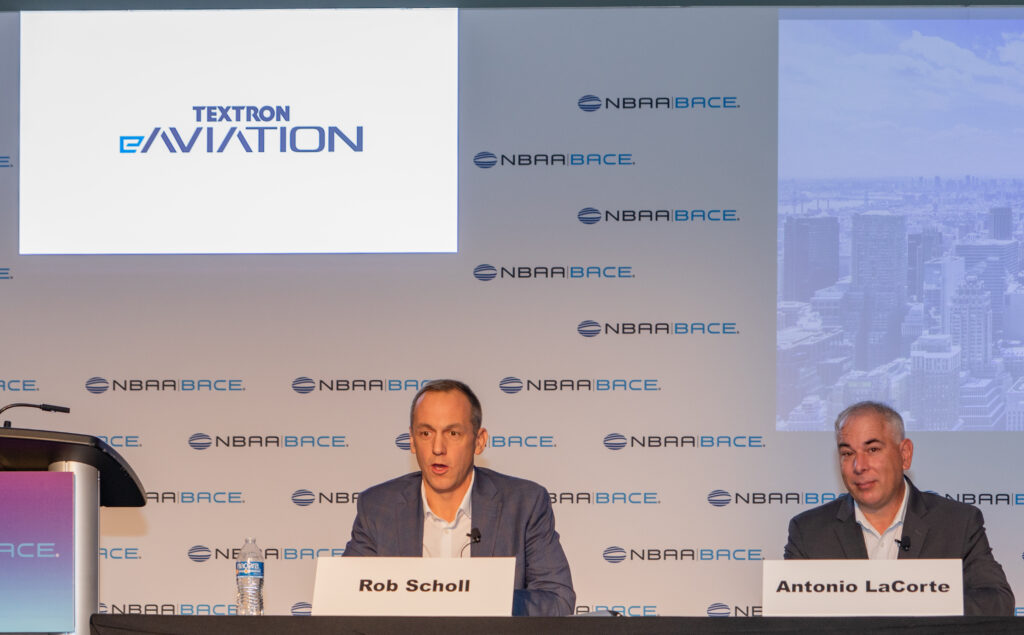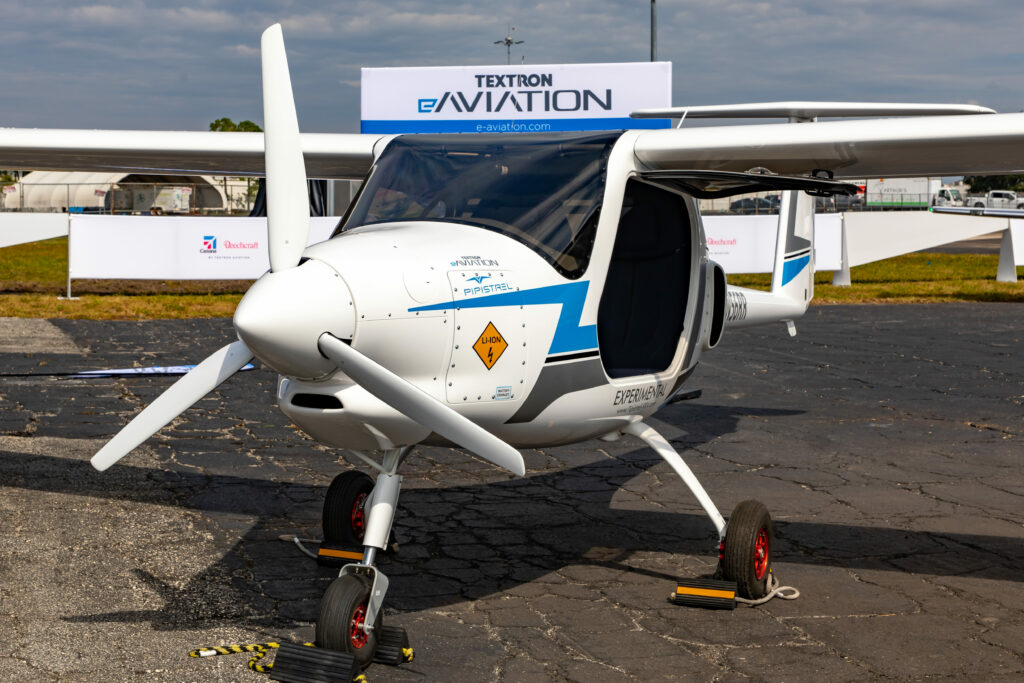Estimated reading time 5 minutes, 44 seconds.
Sustainability and zero-emissions projects were front and center at NBAA-BACE 2022, which was held in Orlando, Florida, on Oct. 18 to 20.
Every aircraft manufacturer is evaluating its current offerings and seeking methods to reach the lofty global aspirations of net-zero carbon emissions by 2050. A variety of approaches are being assessed, including hybrid powerplants, hydrogen cells, and electrification of both new and current models. While plans are in the works among the major OEMs to achieve the next level of propulsion, Textron is jumping to the forefront by actually putting products in the air. The company is achieving this not only by tapping into its global conglomerate of companies, but by bringing even more expertise into the fold.

Textron’s latest acquisition is Pipistrel, a Slovenian-based maker of light aircraft — both traditionally and electrically powered. Founded in 1989, Pipistrel initially built powered hang gliders. Over the years, it ventured into small fixed-wing aircraft, eventually producing the first and only type certified electrically-driven plane. The Velis Electro aircraft achieved EASA certification in June 2020, and remains the only fully electric airplane worldwide to hold this distinction. The two-seat model is powered by a liquid-cooled motor and can stay aloft for 50 minutes, with a 60-dBA sound level — well below anything in its class.
Instead of reinventing the wheel, Textron recognized the advancements already made by Pipistrel in next-gen powerplants. In March 2022, the eAviation division of Textron was established to bring all the company resources together. That effort was boosted in April 2022 when Pipistrel was wholly acquired and joined the Textron family.
“Our goal at Textron is to have a family of systems,” explained Antonio LaCorte, director of external affairs for the newly formed Textron eAviation division.
He told Skies that eAviation is a wholly separate entity within the Textron network, not just a branch of another sector. “eAviation and the addition of Pipistrel is part of our holistic, collaborative effort to advance the goals of Textron as a whole. We want to make people aware of the electrification of aviation.”

He makes it clear that the purchase of Pipistrel was not for the name and products alone, but for the engineering expertise and the people who have made that company successful — particularly in its hybrid and electric advancements.
“Pipistrel will help bring new technology to Textron and, in turn, Textron will share its aviation knowledge from our 100-year history,” added LaCorte.
According to an August 2022 GAMA report, 10 Velis Electro aircraft were delivered to customers from January 2022 through to the end of the second quarter. While the type is flying in Europe, some aircraft are also flying in the U.S. under an experimental airworthiness certificate. FAA certification of the Velis Electro is still pending. LaCorte said the U.S. safety regulator is taking a “cautious, safety-first approach,” but eAviation expects certification similar to EASA’s approach in the near future.

The joint effort between the two companies will assuredly provide future guidance for the Nexus eVTOL program, first unveiled nearly three years ago — but which has seen little activity until January 2022 when it was added to the eAviation umbrella.
A refreshed version of the Nexus was shown at NBAA-BACE this year, a version of which is expected to be closer to final production. If the program continues, Textron hopes to have it in the air in the 2030 timeframe.
“We would like a comprehensive approach to the future of aviation. Not just electric airplanes, but eVTOL, UAS, and other technology that we may not even be aware of yet,” said LaCorte. “The eAviation group is key to achieving those goals.”








